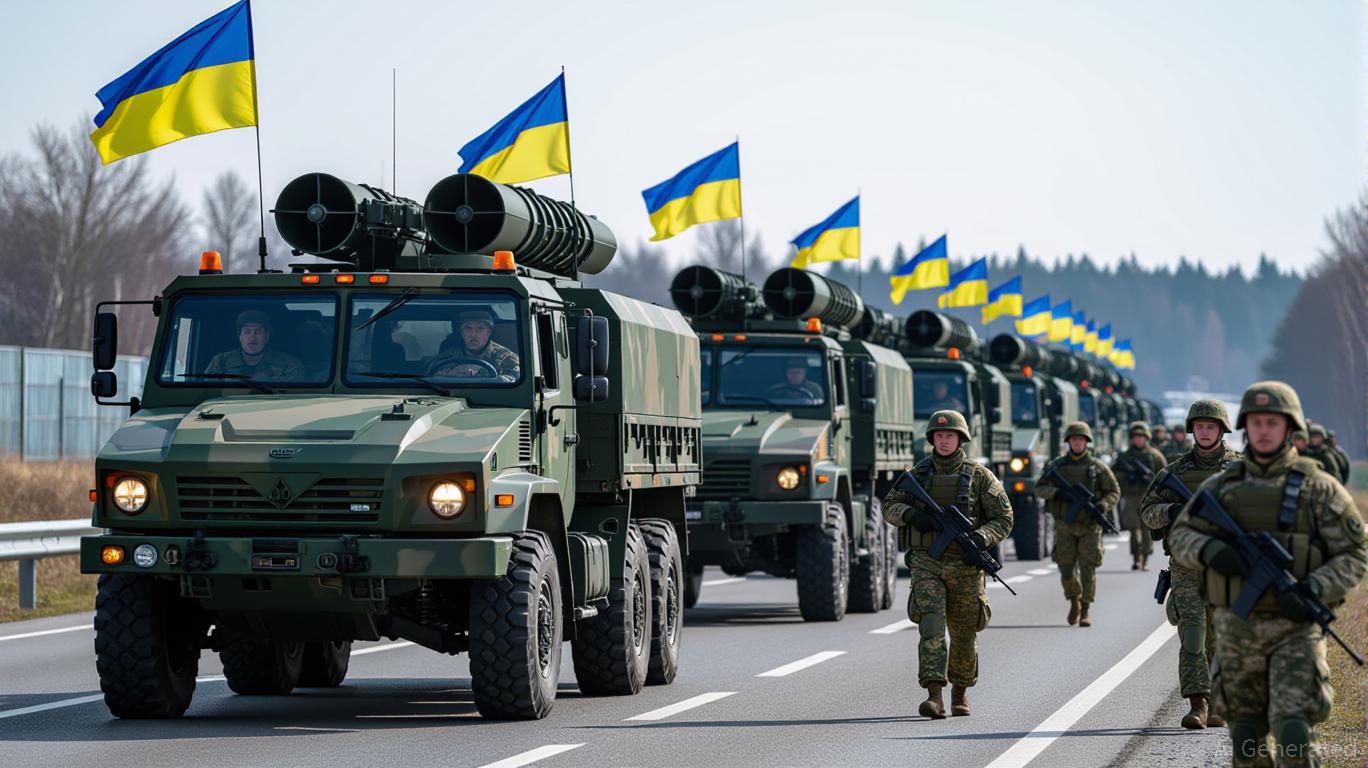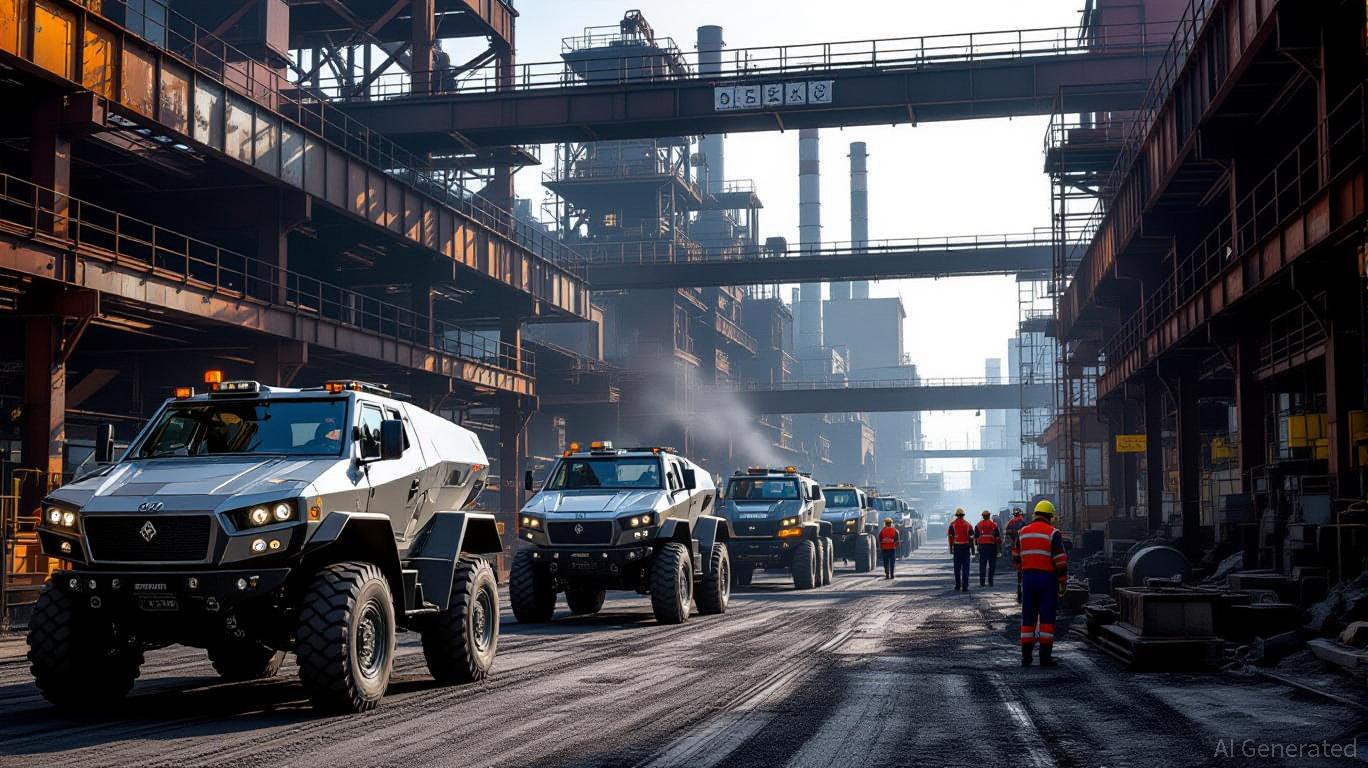The Russia-Ukraine conflict has entered a new phase in 2025, marked by incremental territorial gains by Russian forces in eastern and northern Ukraine, alongside NATO’s accelerated military aid and economic pressure on Moscow. These developments are reshaping global investment flows, with defense, energy, and commodity markets at the forefront of strategic asset positioning. For investors, understanding the interplay between military movements, alliance dynamics, and energy security is critical to navigating the evolving risks and opportunities in Eastern Europe.

Defense Sectors: A New Era of Stockpiling and Innovation
The war has triggered a seismic shift in defense spending. NATO’s innovative “backfill” mechanism—where member states draw from their own stockpiles and the U.S. replenishes them—has accelerated the delivery of advanced systems like Patriot missiles, F-16s, and GMLRS rockets to Ukraine. This model not only ensures rapid response to battlefield needs but also stimulates global defense manufacturing.
European nations, once hesitant to allocate resources post-2014, are now committing to defense budgets exceeding 3.5% of GDP. Germany’s permanent military units in the Baltics, Poland’s domestic artillery production, and the U.S. resumption of paused military aid (e.g., 9,000 Howitzer rounds and 250 GMLRS rockets) signal a long-term industrial pivot.
For investors, this surge in demand favors defense contractors with exposure to NATO modernization. Companies like Lockheed Martin (LMT), Raytheon (RTX), and BAE Systems (BAES) are likely to benefit from sustained procurement cycles. Additionally, niche players in drone technology (e.g., AeroVironment) and cyber defense (e.g., CrowdStrike) could see disproportionate growth as asymmetric warfare becomes the norm.
Energy Markets: A Fragile Equilibrium
The conflict has permanently altered Europe’s energy landscape. Russian gas exports to Europe, once a cornerstone of the continent’s energy security, have plummeted to near zero, forcing a shift to LNG and renewables. The resulting volatility has pushed natural gas prices to €50 per MWh and elevated oil prices by $25 per barrel, with ripple effects on inflation and industrial output.

Investors must consider two trends: the short-term reliance on LNG and the long-term push for energy independence. European energy giants like Shell (SHEL) and TotalEnergies (TTE) are doubling down on LNG infrastructure, while green energy firms (e.g., Ørsted, Vestas) are capitalizing on the post-war reconstruction boom. However, the sector remains vulnerable to geopolitical shocks, as seen in the recent sabotage of the Nord Stream pipelines.
A diversified energy portfolio—combining LNG exposure with renewables and energy storage—offers a hedge against this volatility. Investors should also monitor Russia’s potential to pivot its energy exports to Asia, which could stabilize global prices but prolong its war effort.
Commodities: The Hidden Cost of War
The war’s demand for raw materials is reshaping commodity markets. Steel, aluminum, and rare earth metals—critical for artillery, drones, and missile production—are experiencing surges in demand. Russia’s 420,000 casualties in 2024 alone have driven up the need for ammunition, while Ukraine’s efforts to rebuild its military-industrial base are creating new supply bottlenecks.

Investors should overweight industrial metals and rare earths, with a focus on companies in politically stable regions. For example, mining firms like BHP (BHP) and Rio Tinto (RIO) are expanding iron ore and copper production, while rare earth players like Lynas (LYC) and MP Materials (MP) are positioning for long-term growth.
Agricultural commodities also remain sensitive to geopolitical risk. Ukraine’s grain exports, once a global staple, are still constrained by Russian blockades, pushing prices higher and exacerbating food insecurity. While this creates tailwinds for agribusiness firms like Cargill and Bunge, it also raises the risk of further sanctions and trade disruptions.
Strategic Asset Positioning: Balancing Risk and Reward
The Russia-Ukraine war is no longer a regional conflict but a global catalyst for reordering supply chains and alliances. For investors, the key is to balance cyclical sectors (defense, energy, commodities) with defensive plays in healthcare and utilities to mitigate downside risks.
Geopolitical volatility also favors short-term fixed-income instruments and gold, which have historically served as safe havens during crises. Meanwhile, equity investors should prioritize companies with strong cash flows and pricing power, as inflationary pressures persist.
Conclusion: A New Normal in Eastern Europe
The Russia-Ukraine conflict has accelerated a strategic realignment that will define the next decade. For investors, this means embracing a multidimensional approach to risk management—one that accounts for military escalation, energy transitions, and the long tail of commodity inflation. By aligning portfolios with the realities of a fractured geopolitical landscape, investors can position themselves to thrive in an era of uncertainty.
As the war grinds on and NATO’s 50-day ultimatum looms, the stakes for markets have never been higher. The question is not whether geopolitics will impact investments, but how quickly and profoundly.
